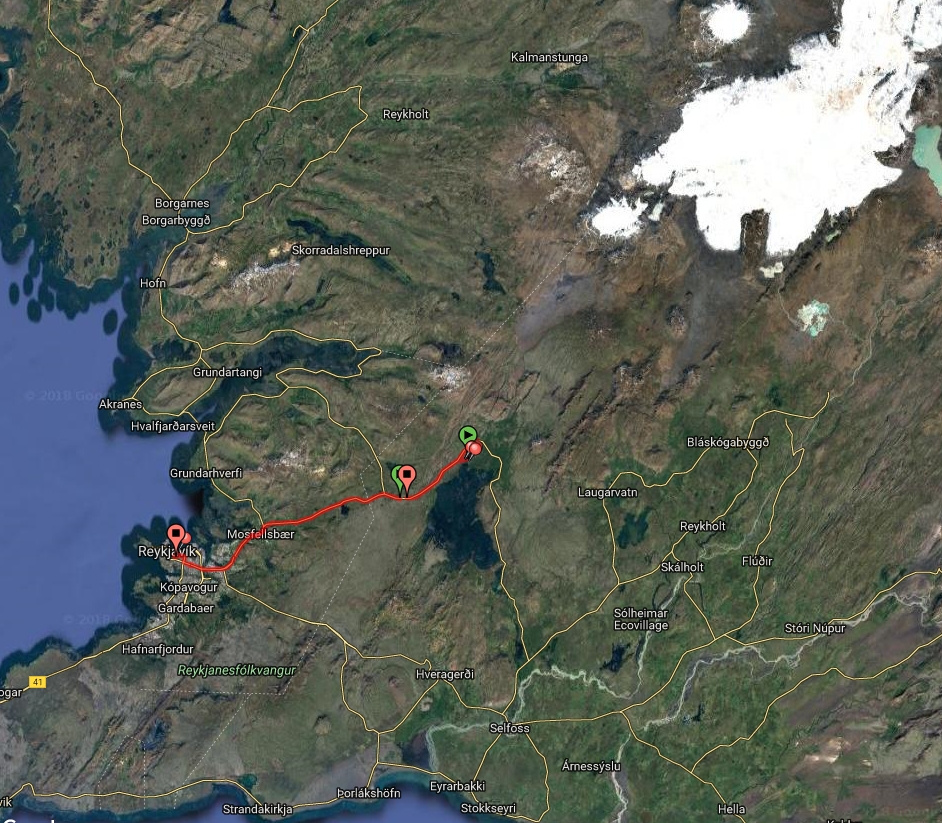At my recent return from Europe to the US, I "had" to make stopover flight though Keflavik in Iceland.

As this was my first visit to Iceland, to make the most of the one day without flight, I booked a "Golden Circle" bus tour that also included snorkeling in the the
Silfra fissure in
Thingvellir Park.
http://www.silfra.org/index.html . The majority of this fissure opened as late as 1789 and receives a stream of water from an underground reservoir close to the
Lángjökull glacier. It takes 30-100 years for this water to filter its way to the fissure through volcanic rocks, making it among the clearest water on earth, with a temperature of just 2°C. Due to continental drift between the North American and the Eurasian Tectonic Plates, this fissure keeps expanding with about 2cm per year. My trusty AW1 with the 10mm lens and the Olympus fisheye converter attached was of course with me.
First, the
Thingvellir Park is a beautiful place in itself. No wonder the vikings chose this site for their "parliament" (Thing). The actual meeting place is behind us in this capture.
#1

The snorkeling was very well organized, everything except base layer provided, and guides making sure everyone got the drysuits properly donned, including straps here and there to keep the 2°C water out.
#2
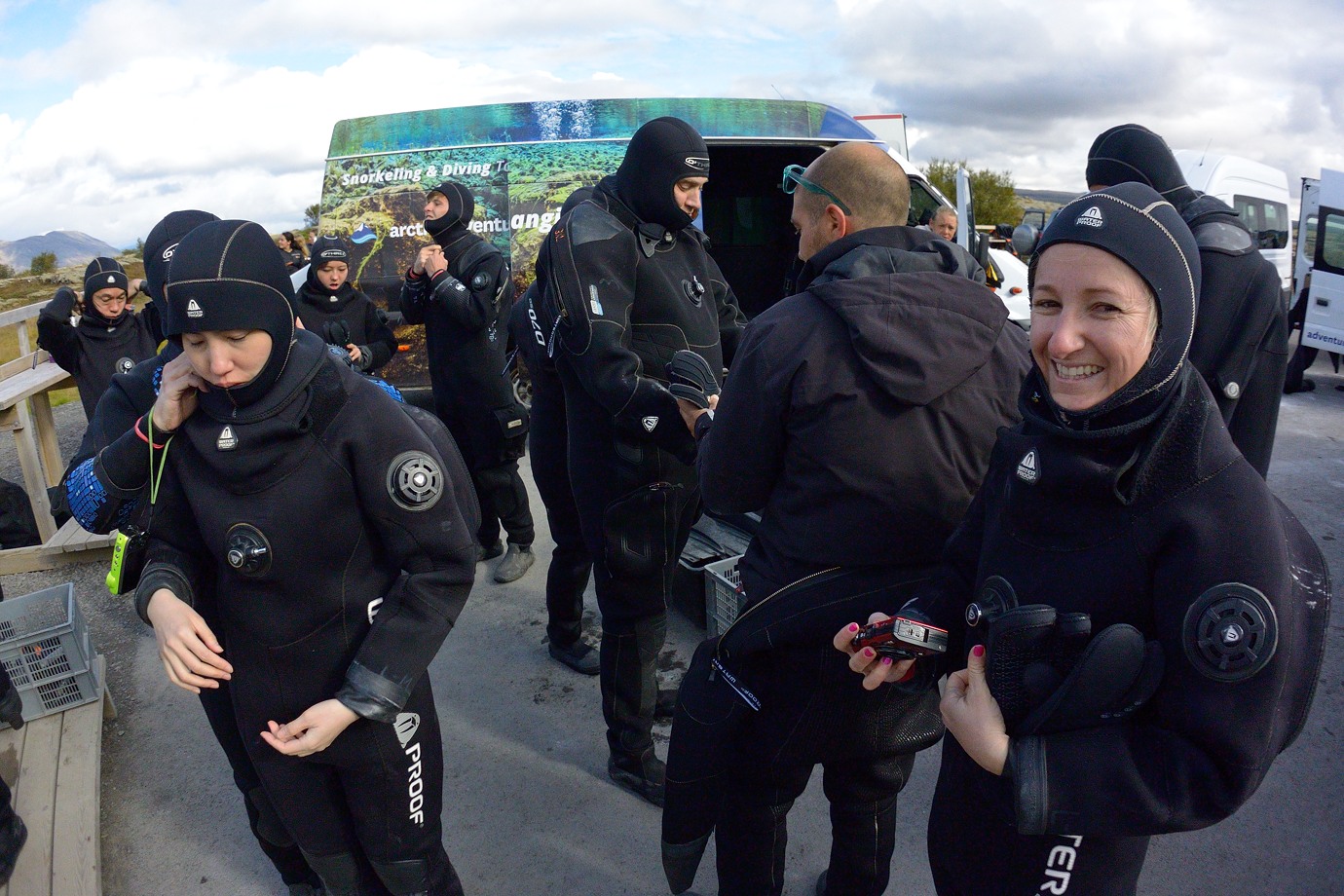
The fissure actually starts inside the entry point. Down to the right there is an underwater cave going in the opposite direction (towards us) down to a depth of 63 meters. Between this pool and the entry point is the
Toilet where a diver would descend to 16m and be flushed out by strong current through the narrow passage underneath the normal entry point.
#3
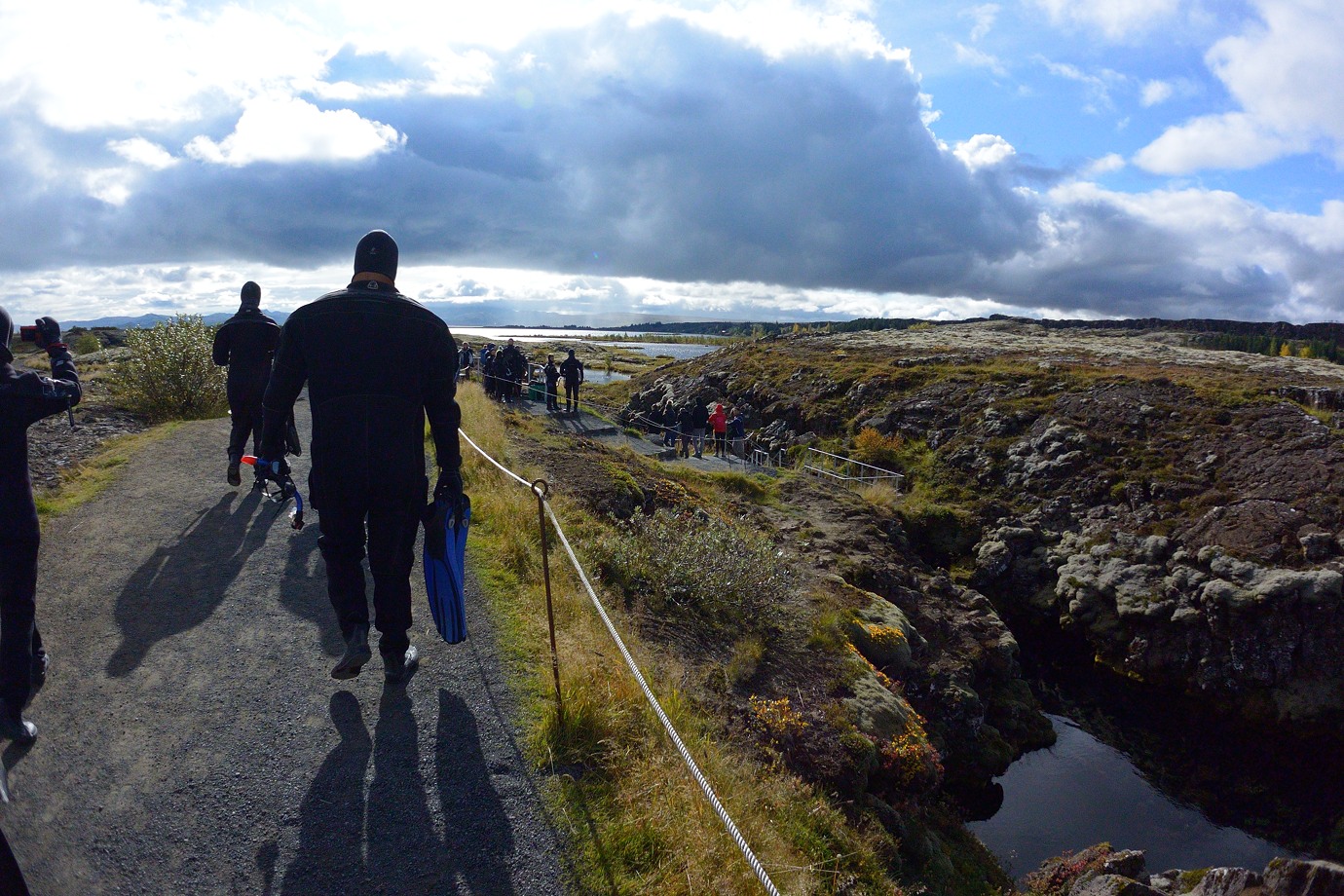
At the entry point guides make sure that snorkelers get their masks and fins properly put on. We are looking at the surface of
The Hall which has passages going down to 45m.
#4
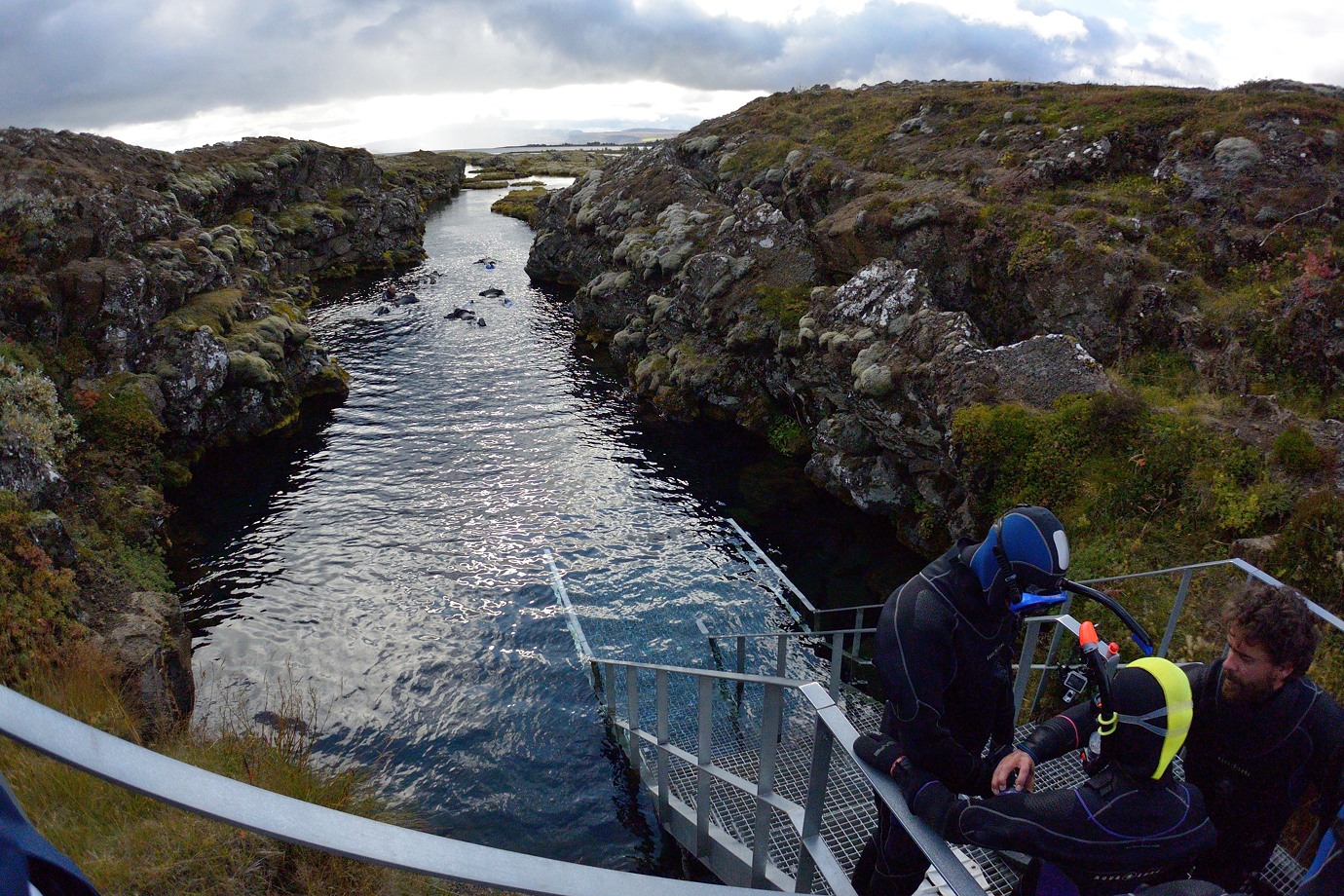
The start of
The Hall.
#5

Looking down into the deep, dimensions are difficult to grasp...
#6
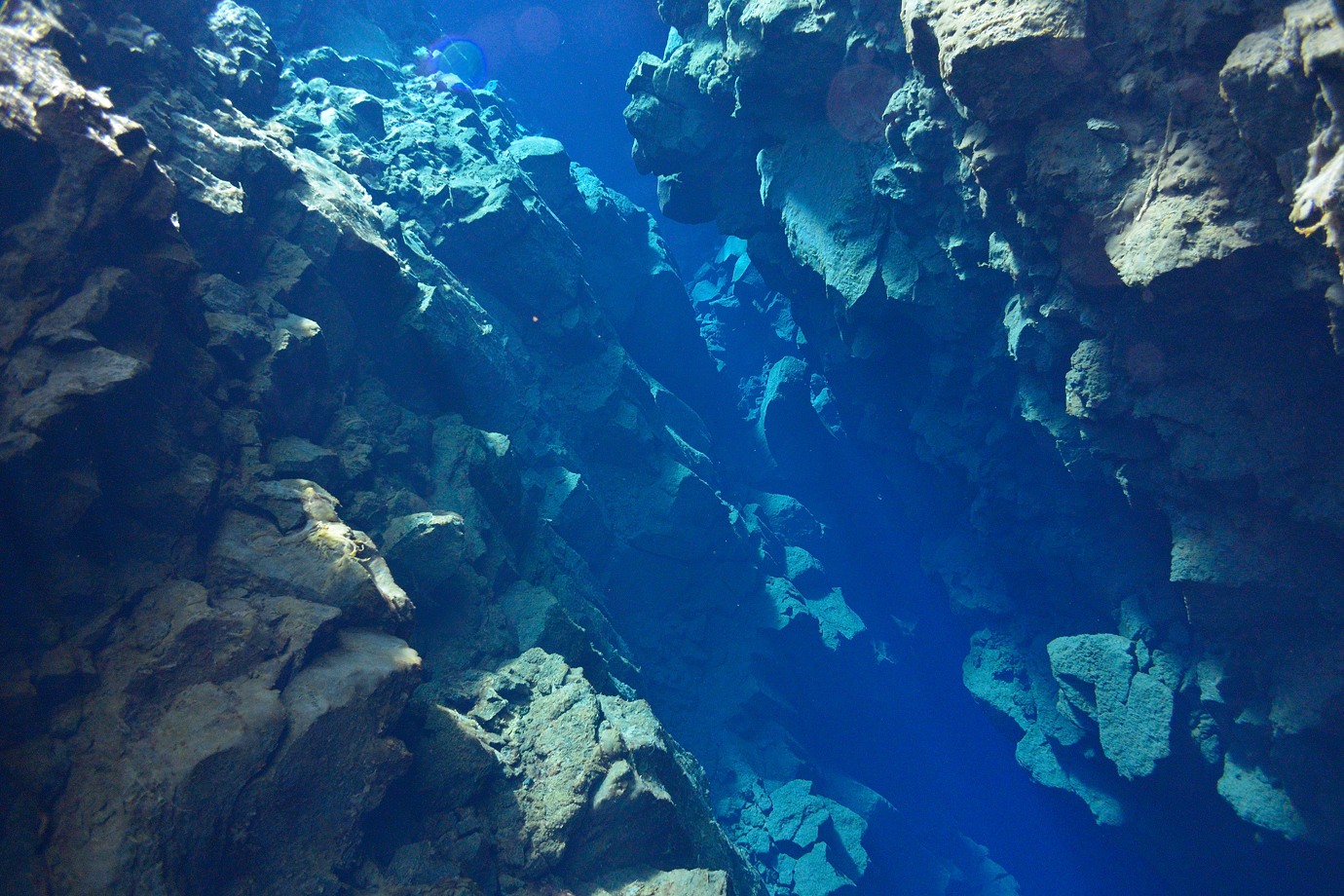
...without a diver in the image. We are now looking back at the entry point.
#7
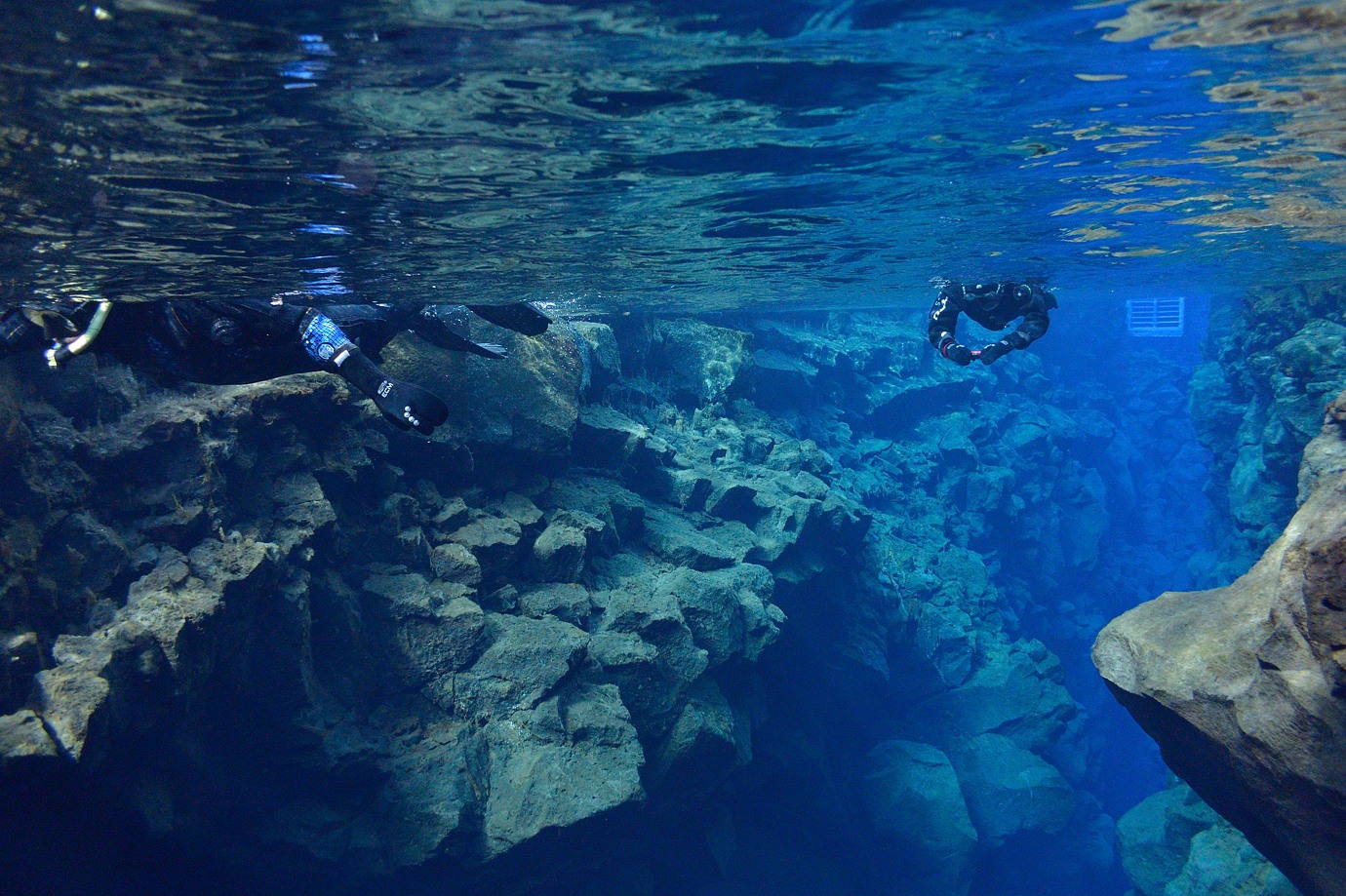
After the hall comes a more shallow passage. Rocks has a golden color once one get close. The current is all the time helping, so one barely has to swim.
#8
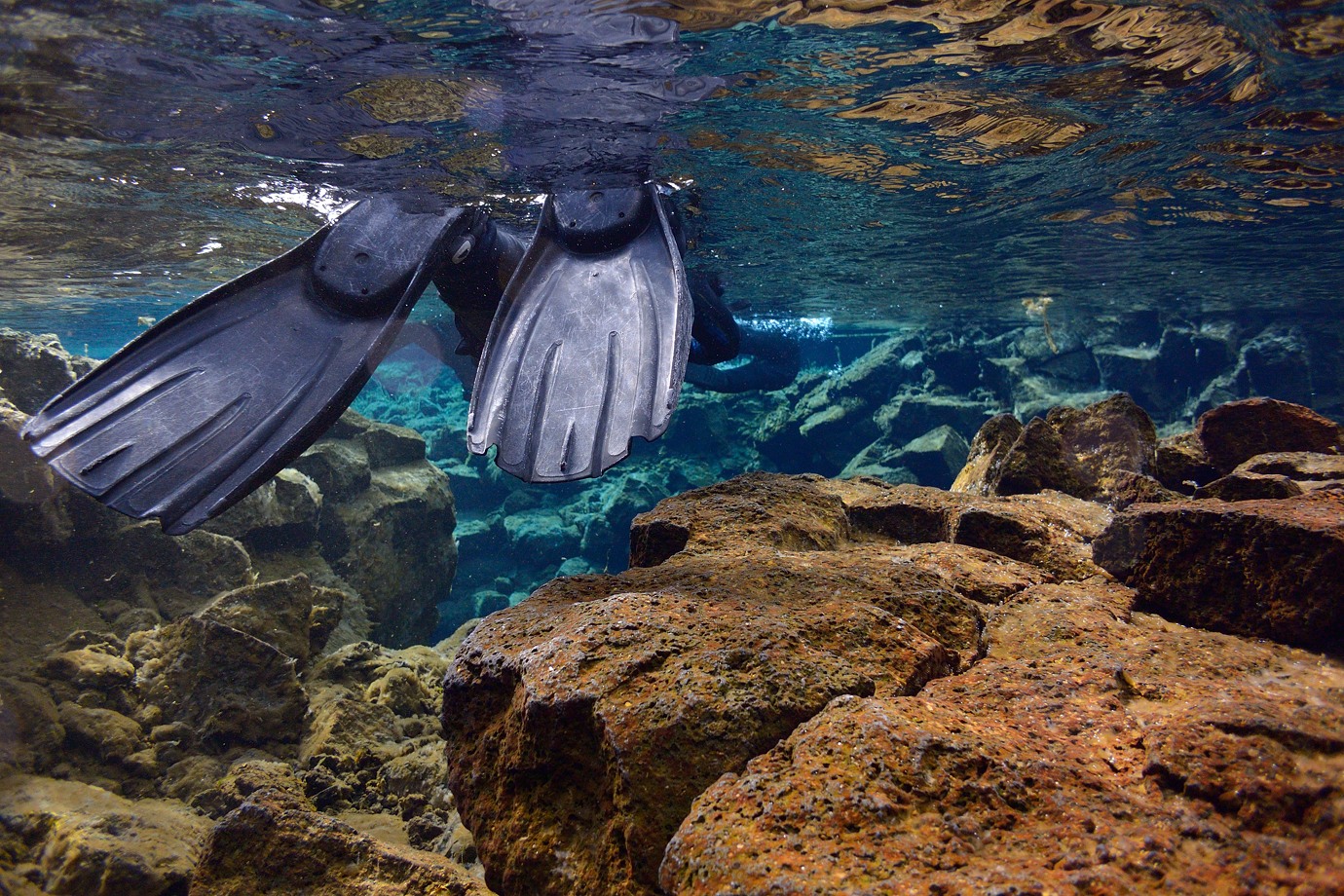
After a 200m swim we are soon approaching
The Cathedral.
#9
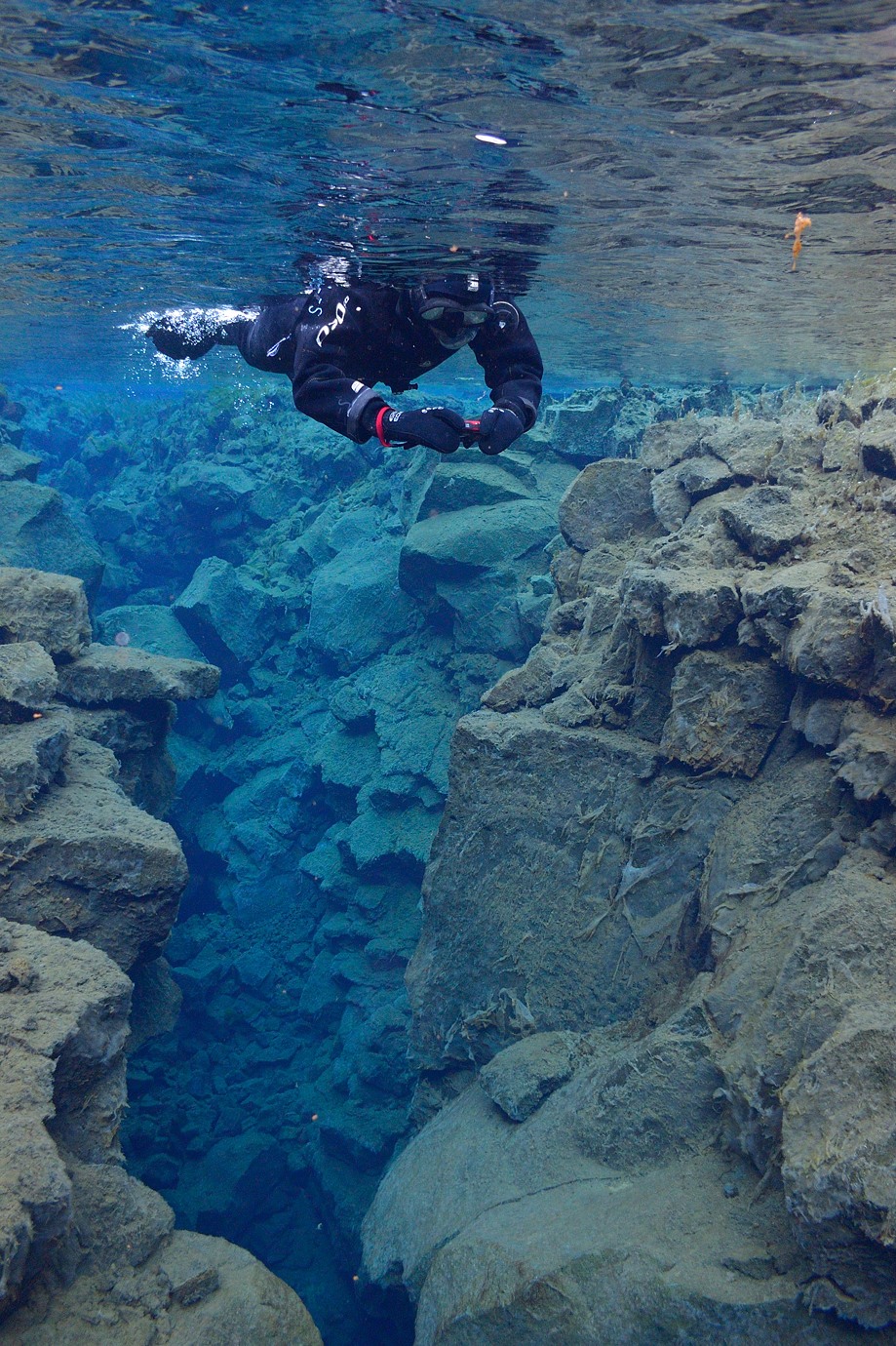
The beginning of
The Cathedral; it is about 20m deep and 100m long. We are looking at closer to 100m visibility underwater!
#10
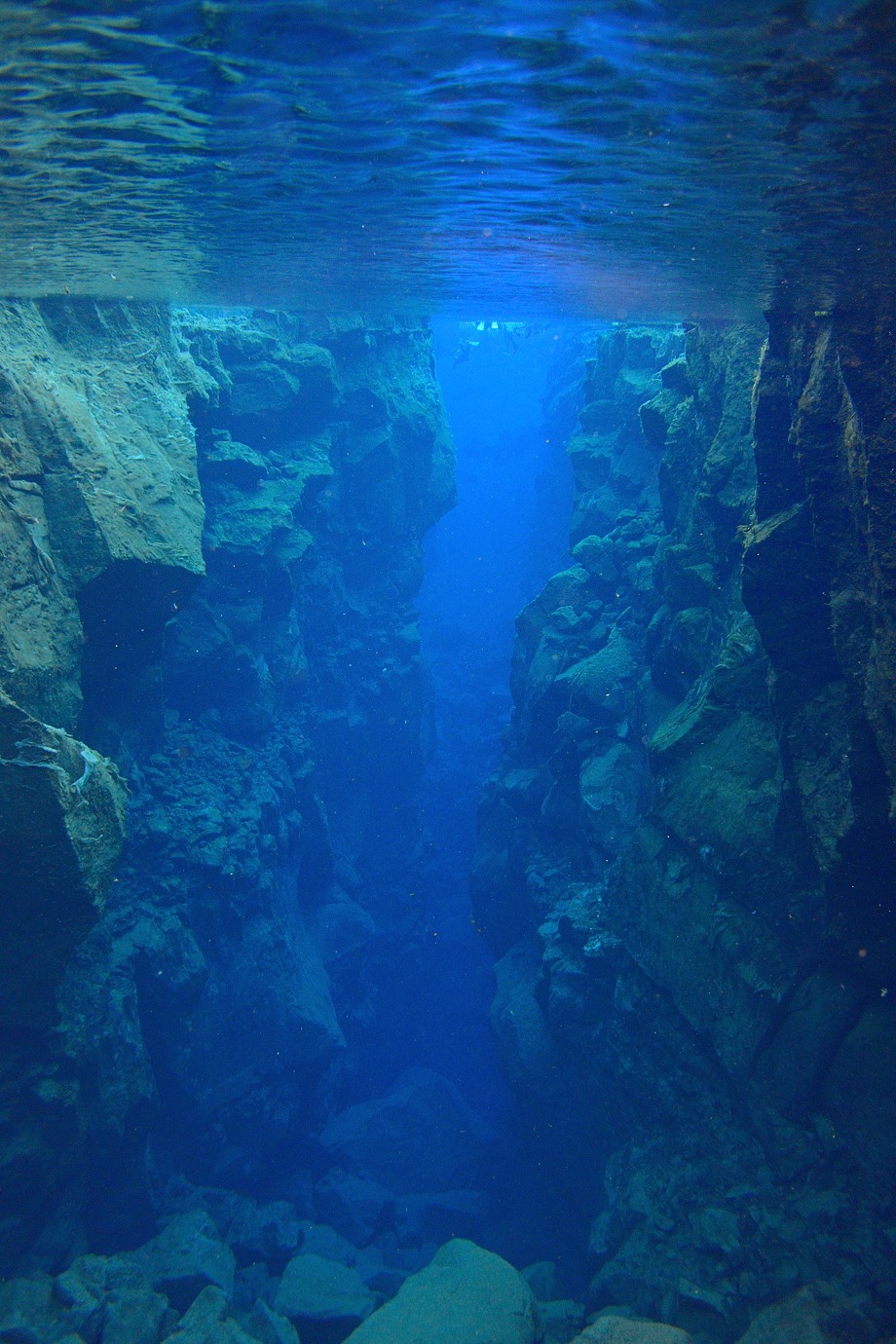
One might wonder what are those white spots in the distance. A 100% crop reveals a group of free-divers (using wet suits) at the other end of
The Cathedral.
#11

Beautiful rocks make up the walls of
The Cathedral.
#12
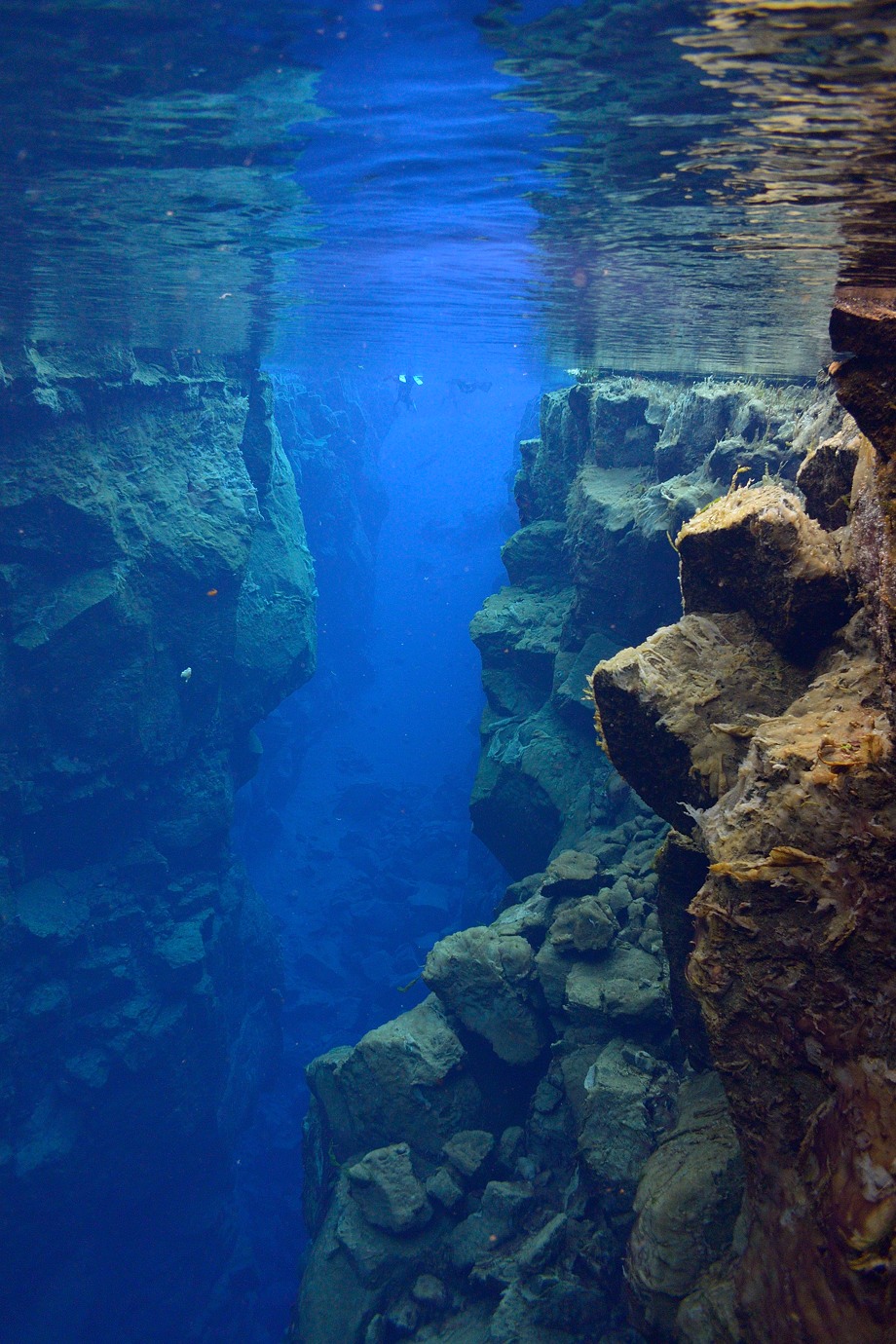
We are approaching the end of
The Cathedral looking back.
#13
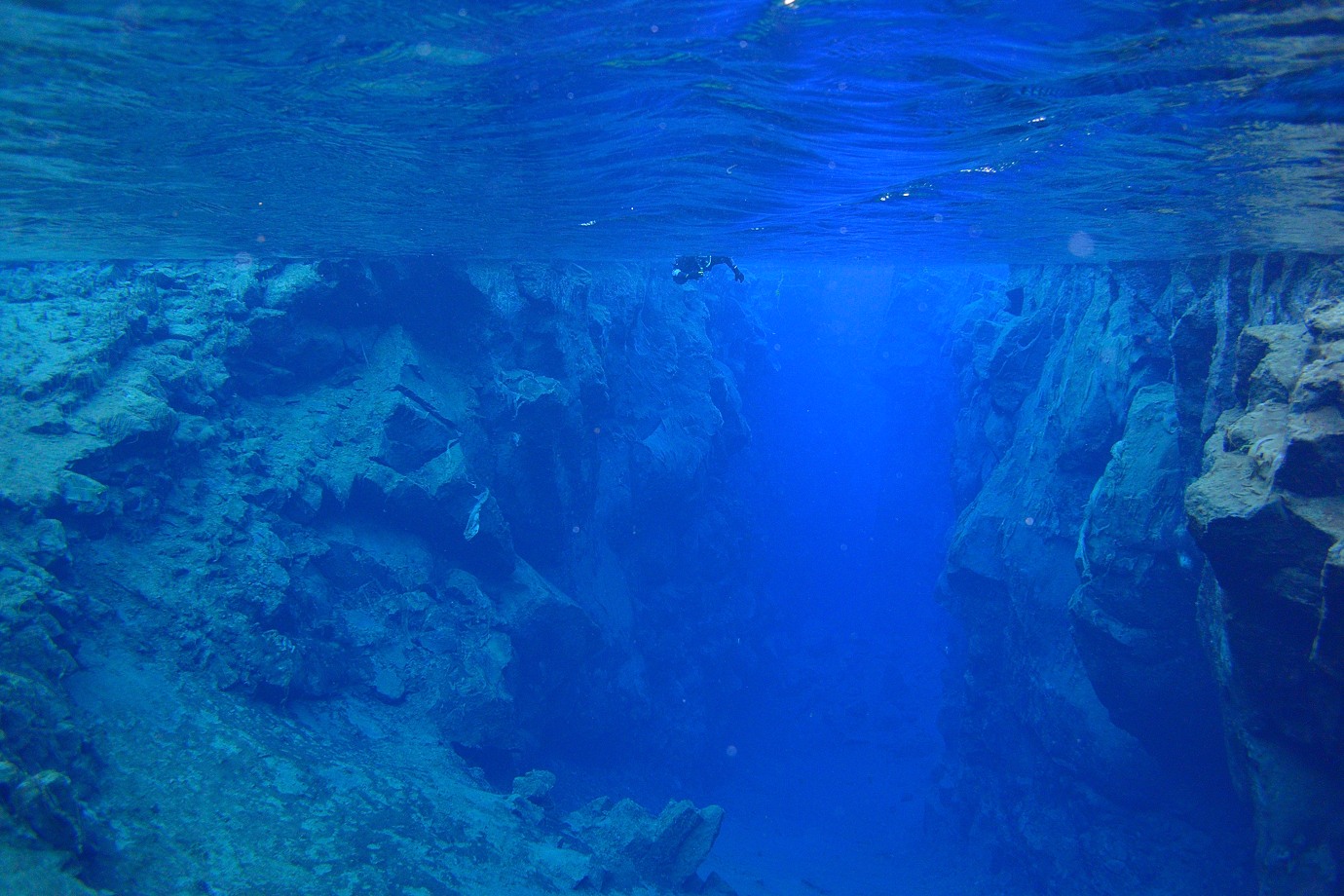
#14
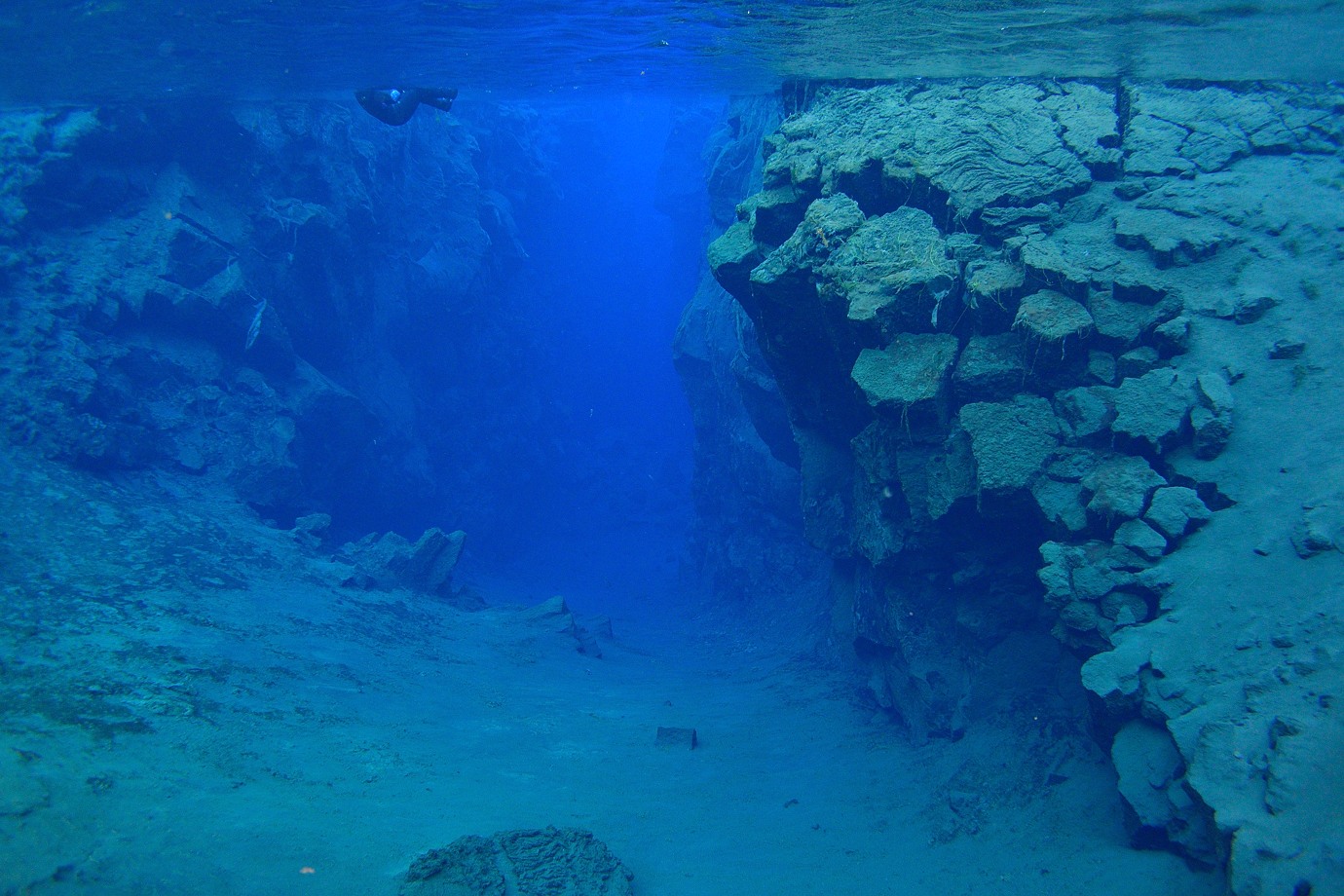
Rocks are not sterile, covered with algae.
#15
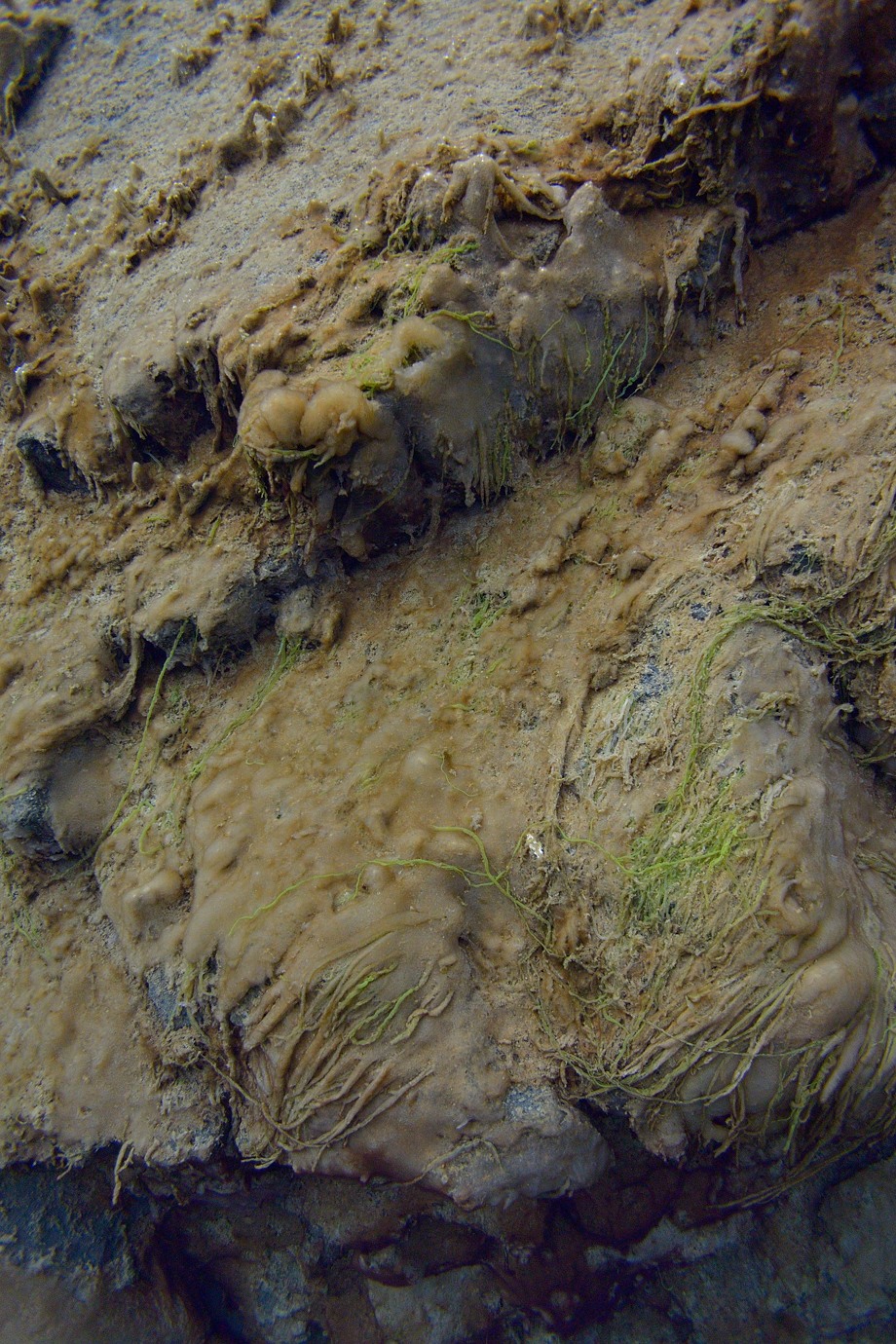
A smaller fissure from seismic activity at the exit point where we soon round an island towards the exit point.
#16
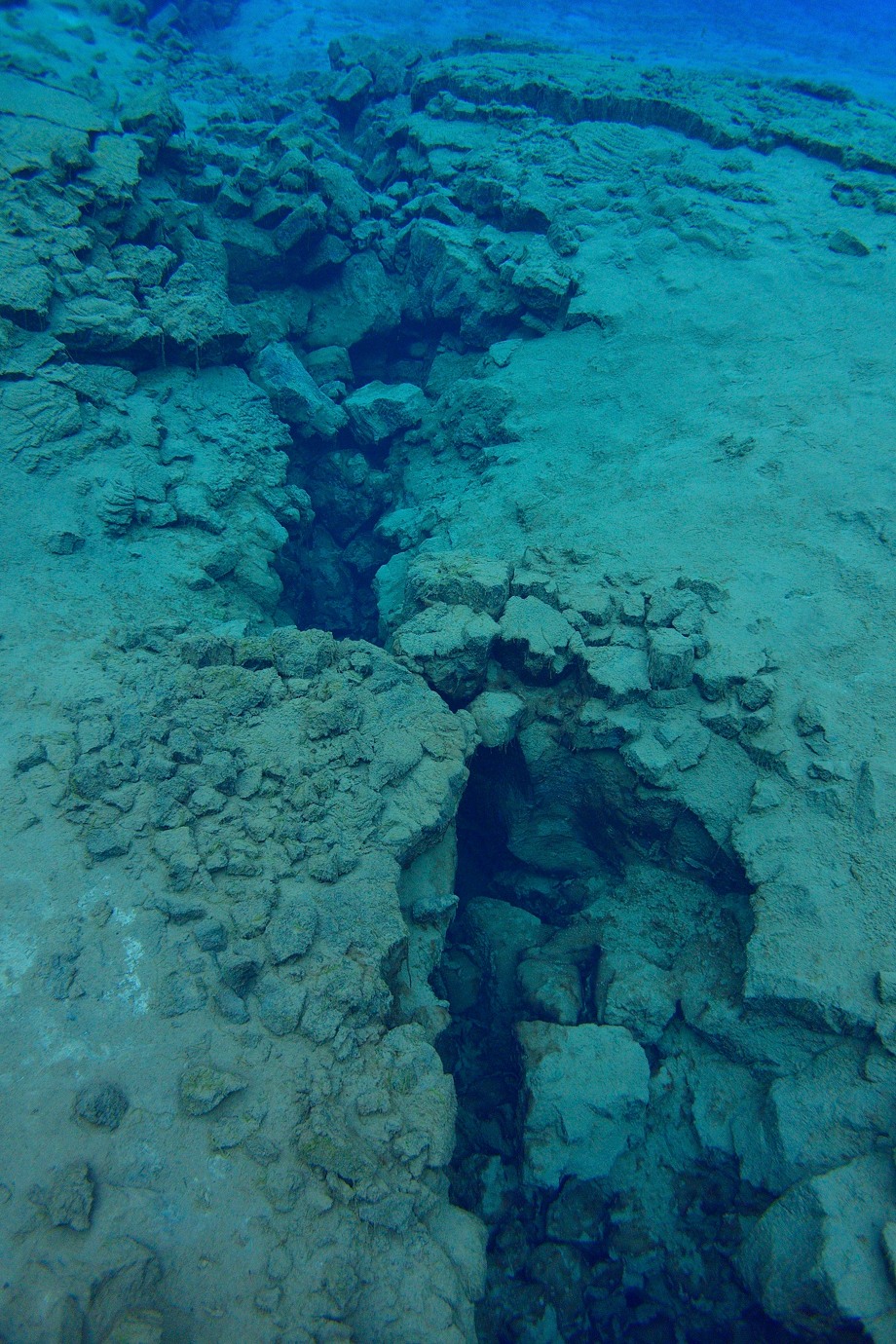
But first we swim through the crystal clear
Blue Lagoon.
#17
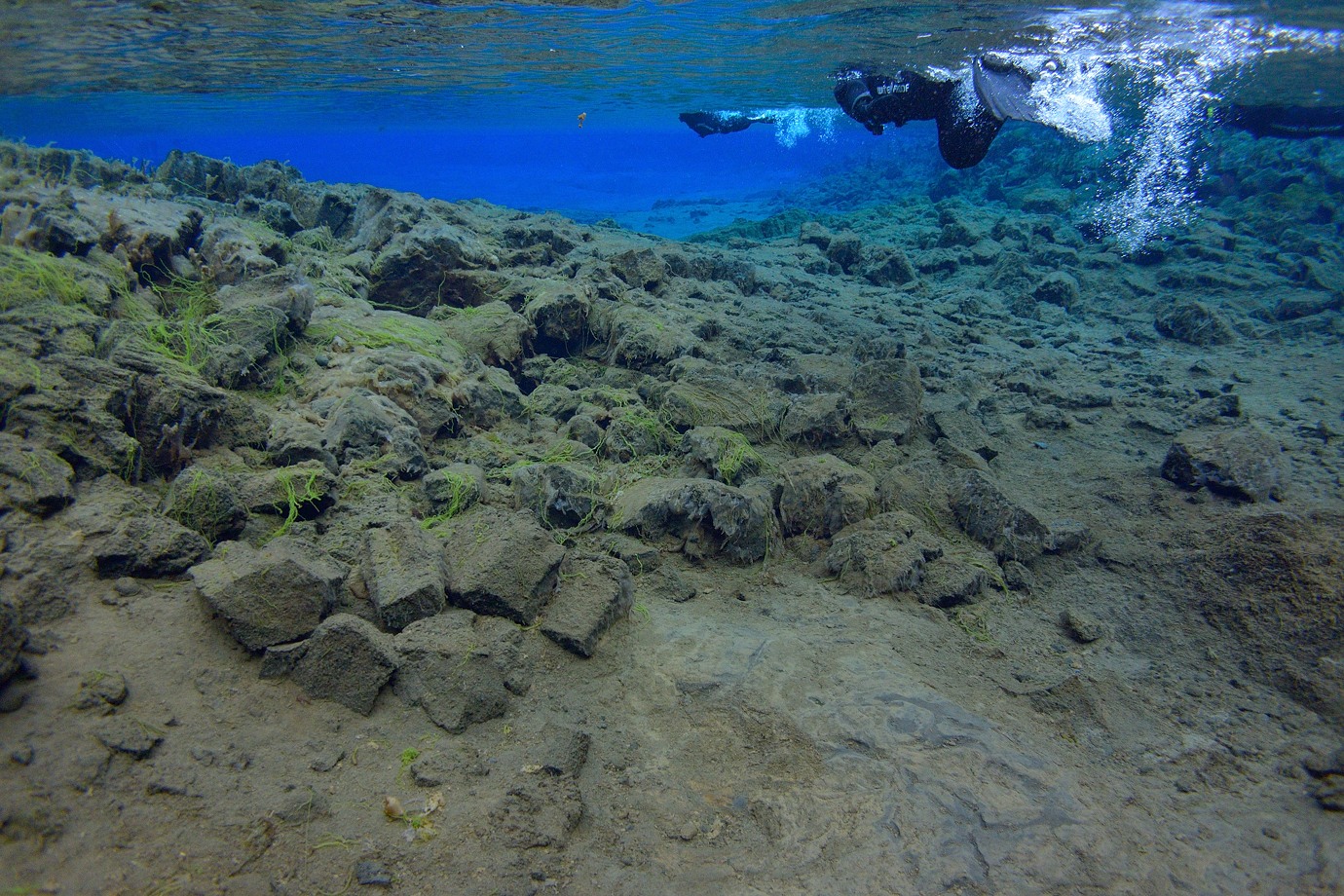
A Japanese snorkeler is helped out of the water. Personally I kept warm and comfortable through the dive, not bothered by the 2°C water on my face at all. I had no problem operating the AW1 with the thick neoprene gloves. Some other snorkelers complained about cold hands.
#18
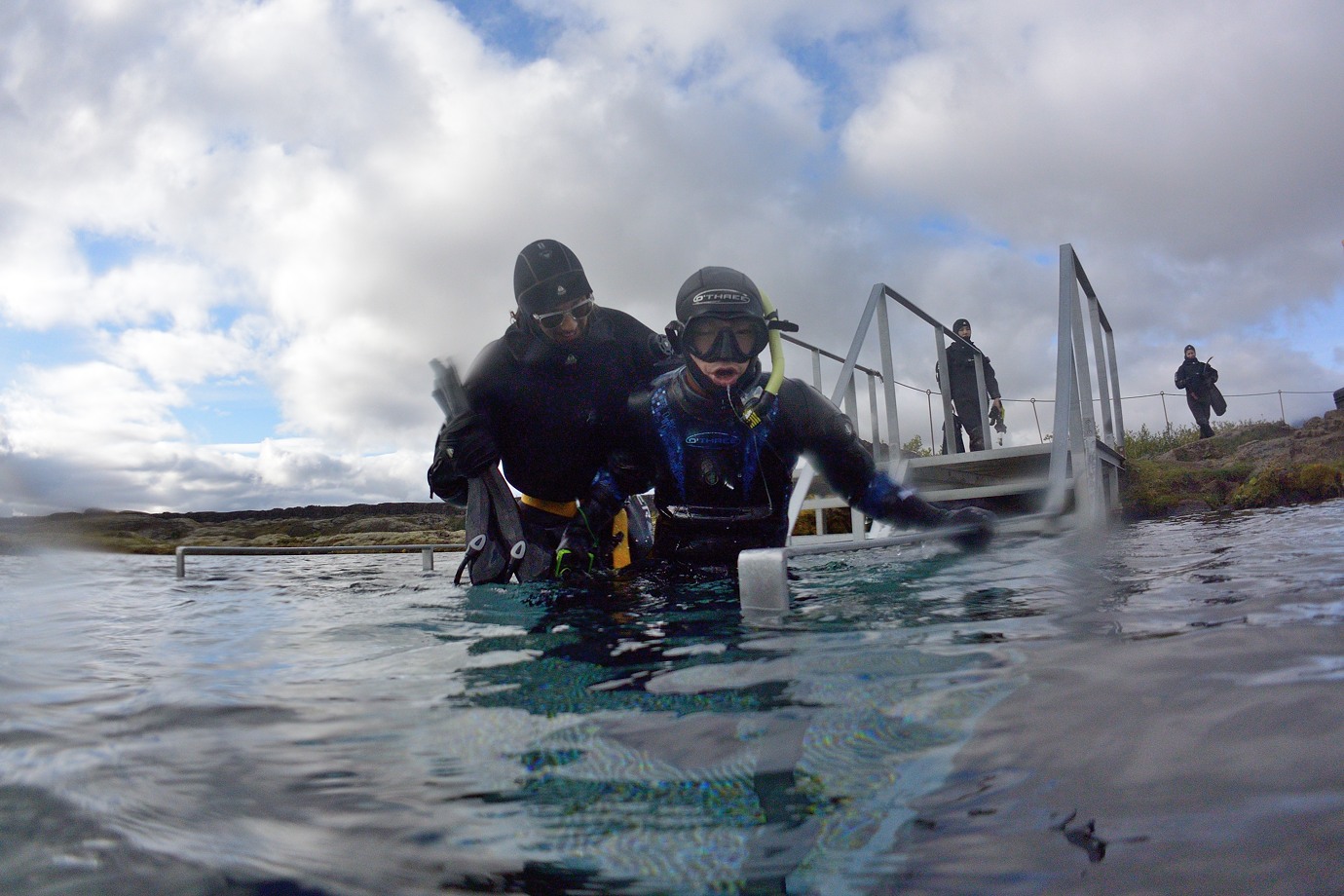
Finally a map showing the route through the
Silfra fissure, around the square little island at the mid bottom into the Blue Lagoon. The GPS of the AW1 only registers for captures at the surface. We are at the north end of
Thingvellir Lake.
#19

And then a map showing the rather large
Thingvellir Lake and the
Lángjökull glacier that during a warm up that melted part of the glacier was the source of the underground cold water that filters through the volcanic rocks, creating some of the clearest water on earth.
#20
